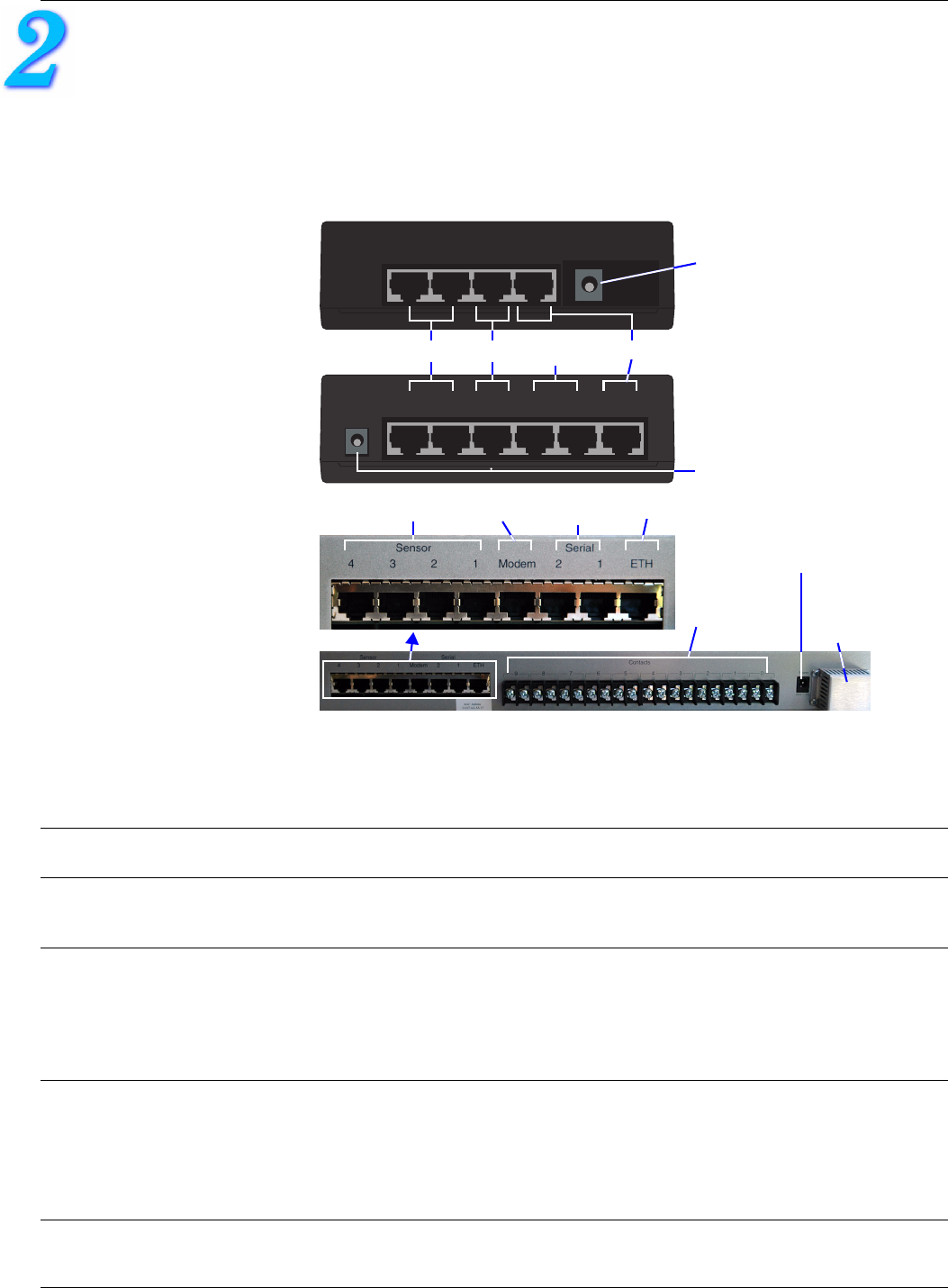
2
MAKE CONNECTIONS
The OpenComms EM must be installed indoors where electrical service is available. The unit should be
placed where it can be easily accessed for making connections. It may be placed on a flat surface or
mounted on a wall (see the user manual for mounting instructions). Consider the length of the sensor and
other cables and the distance to the monitored area when deciding where to place the unit.
Refer to Figure 1 when making the connections in Steps 1 - 5 below to the ports on the back of the
OpenComms EM. The port placement and port labels differ for each model.
Figure 1 Rear view - OpenComms EM ports
MAKE THESE CONNECTIONS:
After connecting,
check indicators
on front of unit:
1. POWER: Connect the DC power adapter to the DCN/Power port on the back of the
OpenComms EM.
Power
ON (red)
2. ETHERNET: Connect a straight-through CAT5 Ethernet cable from your 10 Mbit
network to the Ethernet/ETH port on the back of the OpenComms EM.
Link/Cx
ON (green)
3. MODEM: If using a modem, connect an RJ45 cable from a modem to the Modem
port on the back of the unit (see the user manual for modem
setup and pinout).
Activity/Modem/
Mdm
ON (green)
4. SENSOR: Use a sensor—temperature, humidity, combination temperature &
humidity or water detection—or a contact closure cable.*
Connect a sensor or contact closure cable to any sensor port (e.g., Sensor 1,
Sensor 2). These connections may be made in any order; the ports are identical
and are configured to accept and recognize all types of sensors.
Sensor 1-2
(EM/EM PDU)
or
Sensor 1-4
(vEM-14)
ON (green)
5. SERIAL (EM PDU Controller only): Use the serial cable provided with EM PDU
controllers (available separately for vEM-14 controllers).*
Connect the six-wire end of the serial cable into the RS232 port of an MP
Advanced power strip.
Connect the other end (eight-wire) of the serial cable to either serial port (Serial 1
or Serial 2) of the OpenComms EM.
Serial 1
or
Serial 2
ON (green)
* See the user manual for instructions on making your own cable. (For a contact closure cable, the orange/white and white/orange wires must
be tied together to form the common. The blue/white wire is the contact that may be defined as either Normally Open or Normally Closed.)
EM
CONTROLLER
Rear of unit
Sensor
2
Sensor
1
Modem DCN Ethernet
Power
Sensors Modem
Sensor
2
Sensor
1
Serial
2
Serial
1
Modem DCN Ethernet
Power
Serial
devices
Ethernet
Sensors Modem
Serial
devices
Ethernet
EM PDU
CONTROLLER
Rear of unit
vEM-14
CONTROLLER
Rear of unit
Power
Dry
contact
inputs
Built-in
temperature
& humidity
sensor
